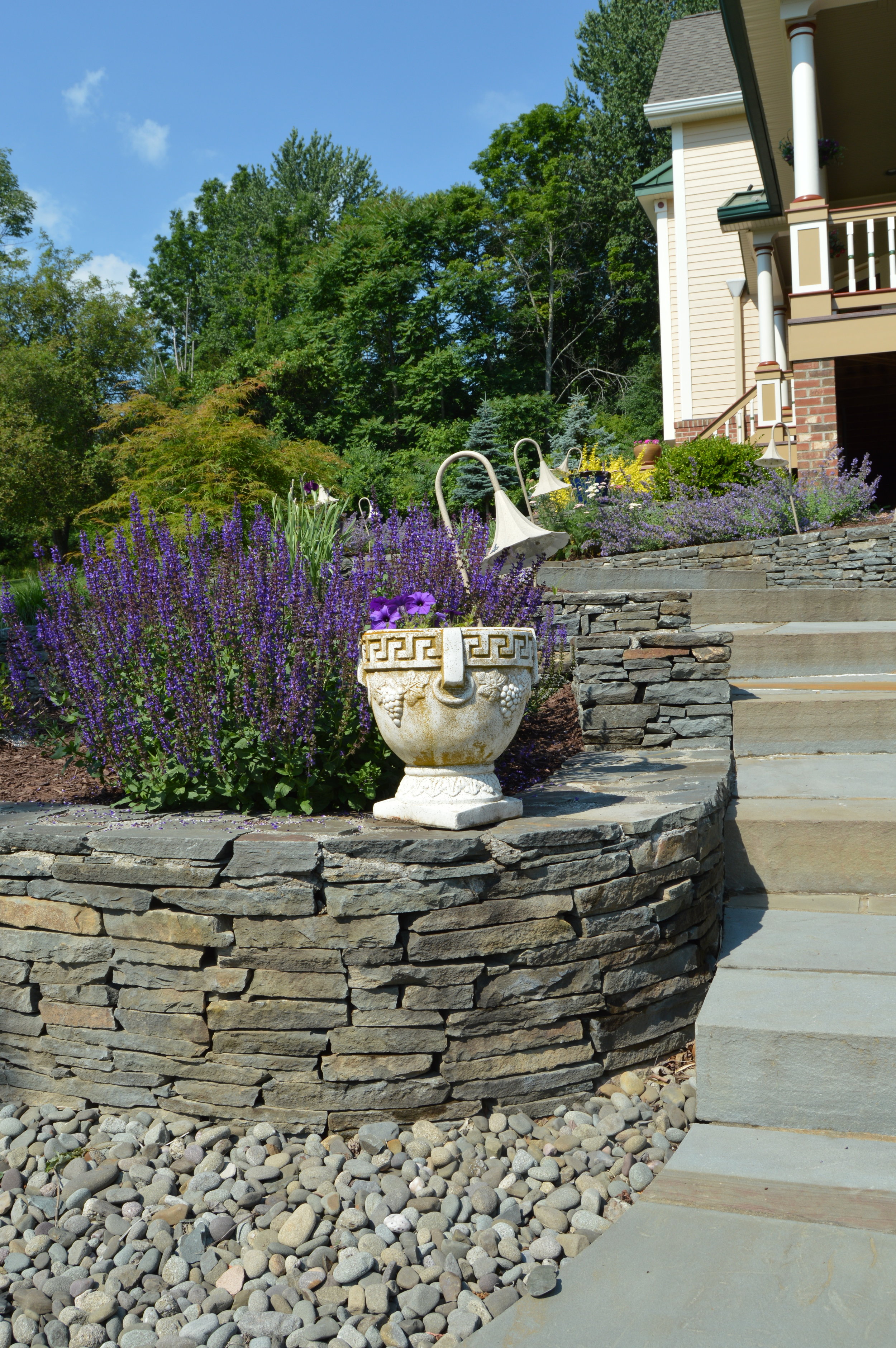Coming up with an outdoor lighting plan for your Goshen, NY landscape is a job best left to the professionals, but to give you an idea of some of the ways you can use lighting to bring out the details and enhance the nighttime atmosphere of your landscape, we’ve put together some little known trade secrets that can make a huge difference.
Increasing Flow Between Indoor and Outdoor Spaces
A lighting plan designed to increase the flow between indoor and outdoor spaces ensures that the brightness and quality of light on either side of the interior/exterior divide remains similar before fading gradually into the outdoor spaces. This can be done through using similar lighting fixtures, as well as by increasing the ability of interior light to escape outdoors with the use of large, sliding glass doors and reflective surfaces. Downlights placed into the ceiling of patio covers is another useful way of doing this.
Using Color for Mood
Color is one of the primary contributors of how a space is perceived. It goes without saying that color is generally altered through painting or by adjusting the predominant materials present on a patio or outdoor area, but lighting provides an even faster, easier solution. Warm lighting, that is light with a tinge landing somewhere between red and yellow on the color spectrum, provides a relaxing, comfortable atmosphere that is ideal for socializing and dining. Cool lighting - landing somewhere between violet and green on the color spectrum, although most frequently shades of blue - creates a stimulating environment. This kind of lighting is often used in modern designs to highlight angles in the architecture, as well as to create a crisp, clean and sleek appearance. Outdoor swimming areas and wet bars can benefit from the invigorating effects of cool lighting.
Lighting to Highlight Texture
Any photographer will tell you how important it is to consider the interaction of light and texture. Lighting can be used to deepen the texture of a surface or smooth it out completely. Lighting that strikes a surface at an angle, such as wall mounted lighting or lighting low to the ground, will highlight the various bumps and valleys of the surface. This can be done to enrich the texture of natural stone, for example, but it may be an unwanted effect if a smoother looking surface is desired. In such a case, direct lighting can flatten out the shadows and make the surface appear smoother and less dramatic.
Layering of Lighting
To achieve a smooth, even ambiance, lighting should be multi-layered so as to reduce glare and shadowing. Multiple points of low-level lighting are far kinder to the eyes and the visual landscape than one or two bright sources.
Related: LED Tips from an Outdoor Lighting Contractor
Lighting as Decoration
It’s easy to forget the fun side of lighting when taking all this into account. Personal touches and details can be added with string and tube lighting to highlight elements of your landscape. Even decorative lamps can be integrated into the lighting profile of your patios and outdoor entertainment areas.


